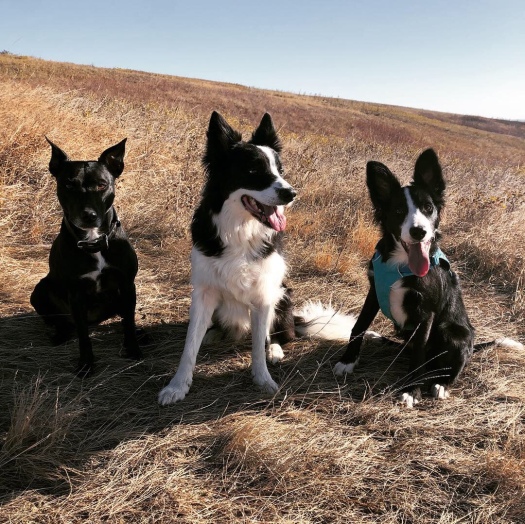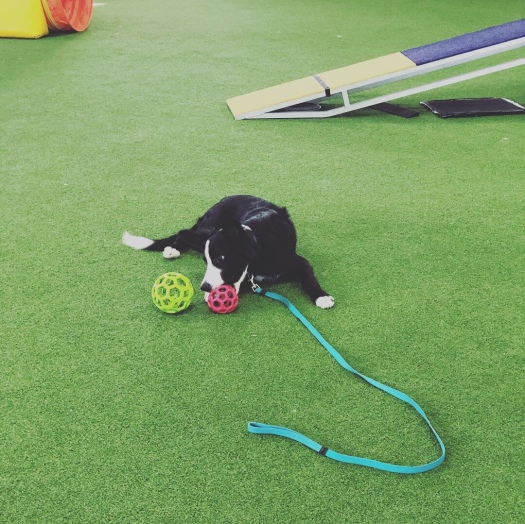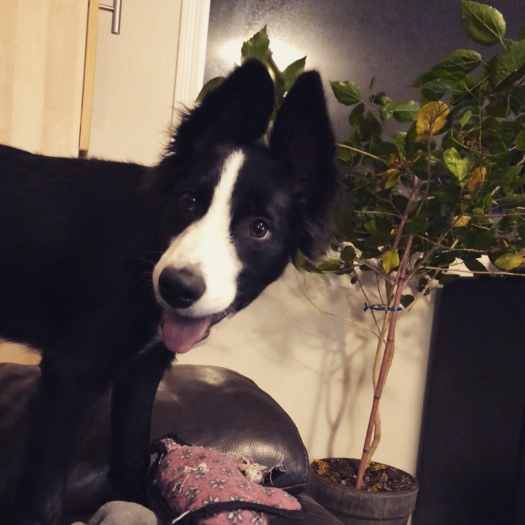
His ears are humongous still. He sees people at any distance and quickly looks my way for a reward.
Puppy life is now set at a new baseline- sometimes we worry about things but most times we can handle it. Momo is able to experience life with Arcade and Elsa to a full regard, a fact that I’m very happy about and proud of.
When confronted with strange dogs on leash there is work to be done to get to to the same comfort baseline. Pattern feeding has been a huge help on top of the “look at that” protocol.
We had a big adventure to the Training Troop trial on the October 20th weekend. I had no expectations for how he would handle and new and busy environment. It’s been about a month since he’s seen a collection of leashed dogs. I was thoroughly surprised and proud of how far he’s come. We stayed a good distance from other dogs and did a good job of accepting people close by. Even had a play with another puppy (thanks Jan!) It was incredibly nice to talk with people in person and the support that’s been offered to help us on our journey.
Over the next few months, I am working to expose Momo to high arousal environments. Our plan is to have a familiar pattern set up so he can anticipate what is required from him in the environment. So far this sounds technical, but the set up is simple. Space to move away from arousing subjects and a station to focus our energy on performing a static behaviour.
I’m lucky that he is extremely biddable. I’m lucky to have him. Loves toys, loves me, and will accept the rest with time.






 The current attitude that people have towards him is similar to when Elsa grew to be over 16 inches tall. People would attempt to empathize with me, how sad, how unfortunate. I didn’t feel that way – there was no sadness for me. Like Elsa’s situation I’ve been forced to adjust my path. At first, a puppy that wasn’t interested in visiting with people. Then a puppy that barked at people. Hopefully soon a puppy that can accept people in his space without fear.
The current attitude that people have towards him is similar to when Elsa grew to be over 16 inches tall. People would attempt to empathize with me, how sad, how unfortunate. I didn’t feel that way – there was no sadness for me. Like Elsa’s situation I’ve been forced to adjust my path. At first, a puppy that wasn’t interested in visiting with people. Then a puppy that barked at people. Hopefully soon a puppy that can accept people in his space without fear.
